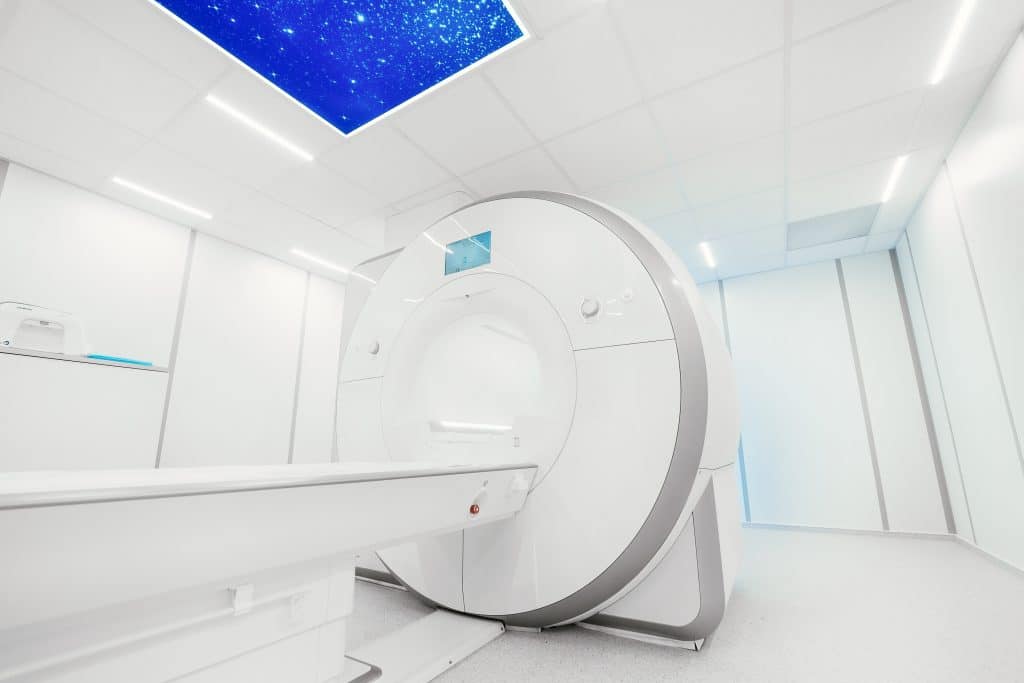Medical Chillers
MRI Chillers: Answers to Common Questions
MRI Chillers: Answers to Common Questions
A magnetic resonance imaging (MRI) is a noninvasive medical test that uses powerful magnets and computer imaging to create accurate body scans. Through an MRI scan, physicians can examine vital organs by evaluating a detailed visual rendition through a series of shots called “slices” of the organs.
These “slices” can be seen on a screen, stored on a CD or uploaded to the cloud. Since an MRI does not use X-rays, MRI scans are considered clinically safe to be performed on pregnant patients.
How Does an MRI Machine Work?
A patient lies on a moveable bed that is then inserted inside a chamber to perform an MRI. Depending on the machine’s make and model, an MRI machine can look like a narrow tube or a more open cylindrical machine. Once the patient is inside the machine, the powerful magnetic coils in the machine are activated, creating a magnetic field around the patient.
This magnetic field coupled with radiofrequency signals alters the hydrogen atoms in the body. Once these hydrogen atoms realign, they send out radio signals transmitted back to the computer, which analyzes these signals and turns them into images.
What Is Quenching, and How Can It Be Avoided?
To create the magnetic field that is responsible for rendering the MRI slices, the MRI magnetic coils must be thermoregulated at -270 degrees Celsius. The MRI components cannot achieve this temperature by relying on the room temperature even with an efficient HVAC.
The MRI machine has a refrigeration system that uses compressed helium to supercool the magnetic coils to accomplish this cryogenic state. In some cases, helium escapes from the chamber and results in a sudden increase in temperature.
This overheating can significantly impact the capability of the magnets to produce a strong enough magnetic field. This process is called quenching, and when the temperatures are not controlled, it could result in machine breakdown wherein the magnets become totally resistant and could translate to millions of dollars in losses.
What Are MRI Chillers?
An MRI chiller is a machine that keeps the MRI scanner components within the optimum temperature range of -270 °C. To produce high-quality images, an MRI machine expends a lot of energy, which raises the temperature inside the machine. Without an MRI chiller, this increase in temperature can result in overheating.
MRI chillers work to keep the electromagnetic components cooled so that they can function optimally. An MRI chiller cools down the magnetic coils inside an MRI machine by supplying it with coolants.
MRI chillers can either be air-cooled or water-cooled, depending on how the chiller transfers heat. Air-cooled MRI chillers are more efficient in settings with low water pressure or a limited water supply as these systems utilize the surrounding air to create a coolant and transfer heat.
Some MRI chillers are also equipped with built-in diagnostic capabilities to alert you for any system issues that might disrupt MRI scans.
How Does an MRI Chiller Work?
An MRI serves to cool down the magnetic coils and the compressed helium. An MRI chiller provides the MRI machine with the coolant it needs to maintain its cryogenic state to prevent overall system breakdown in case of a potential helium leak.
Not only does an MRI chiller cool the magnetic coils, but it also functions to maintain temperatures on the cryocooler as well. An MRI chiller makes sure that your MRI machine’s components are thermoregulated in case of emergency or when the built-in cooling system has to be taken down for repairs.
With an efficient MRI chiller in place, you can save millions in repairs and damages that could have resulted from the MRI machine overheating or quenching.
